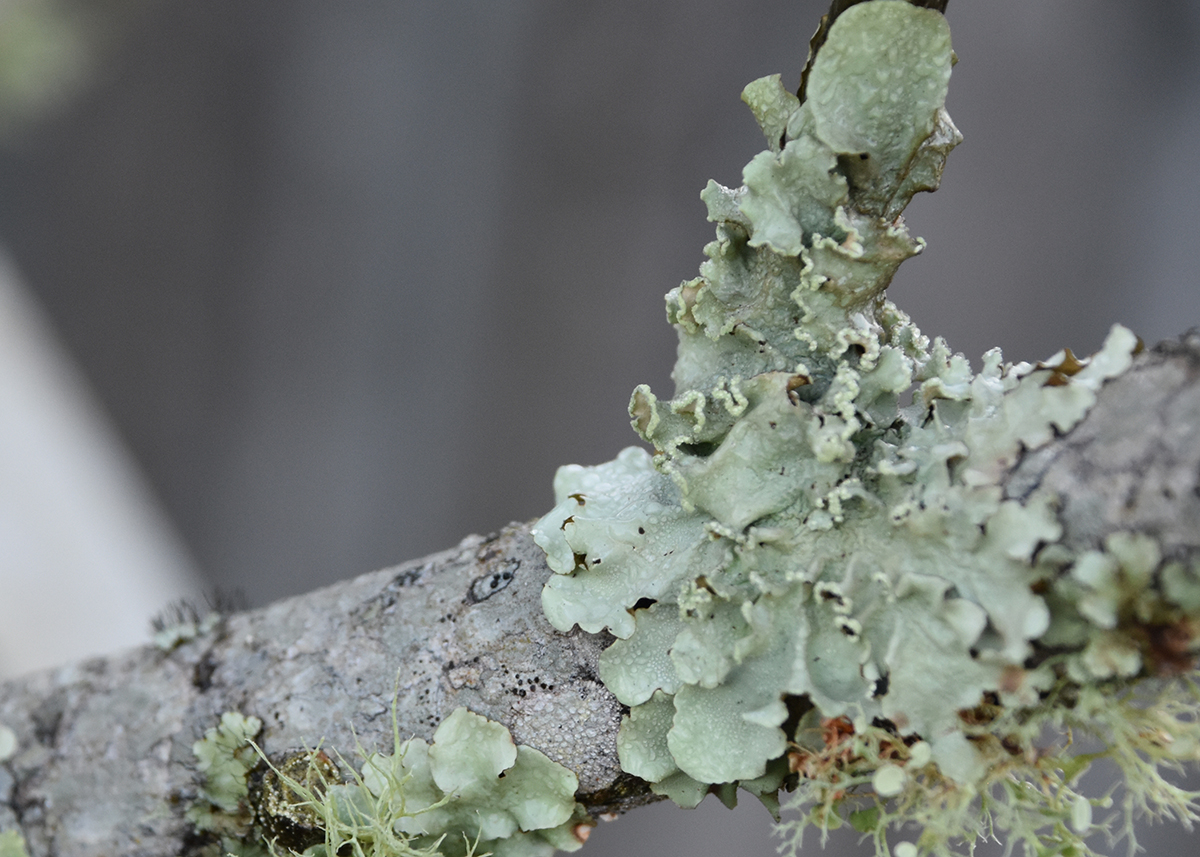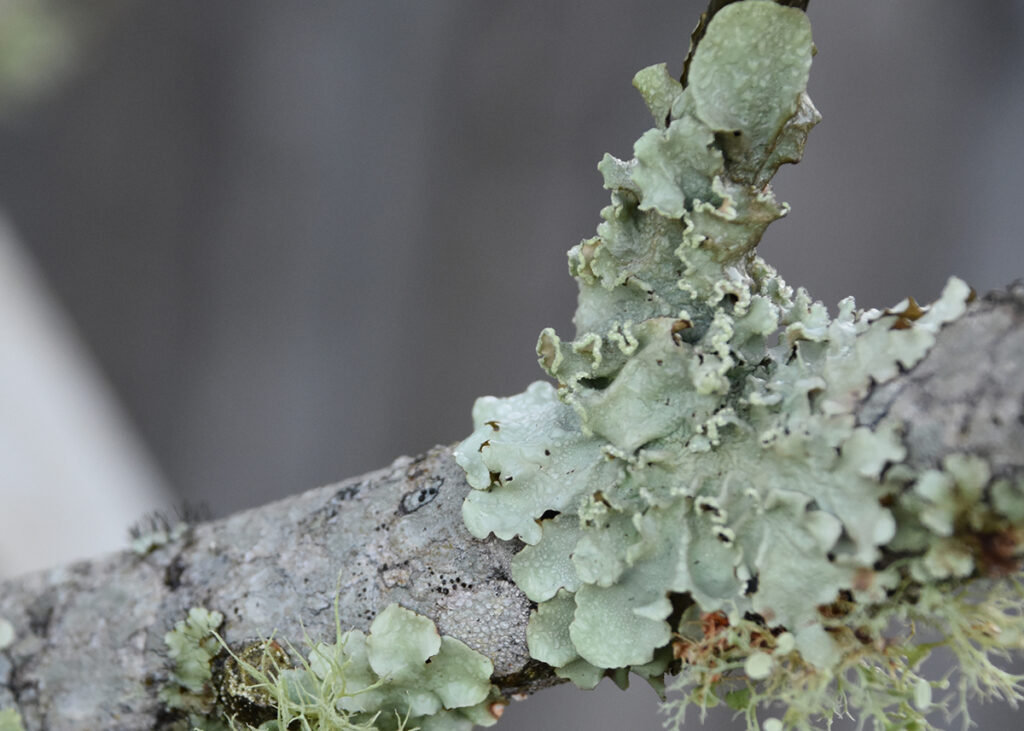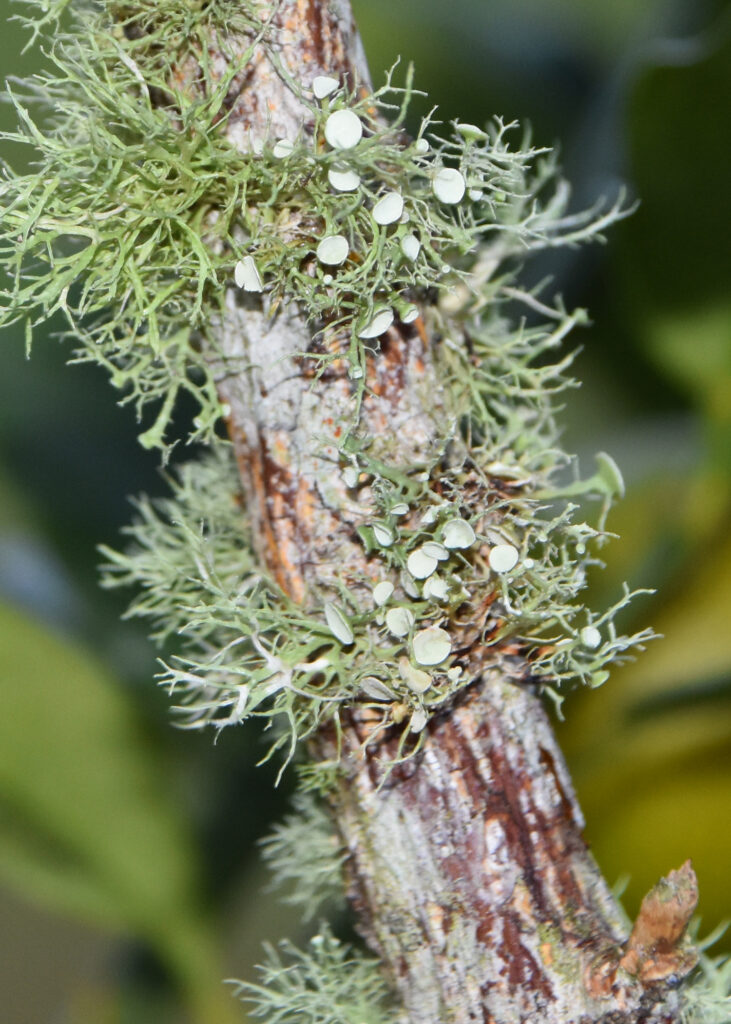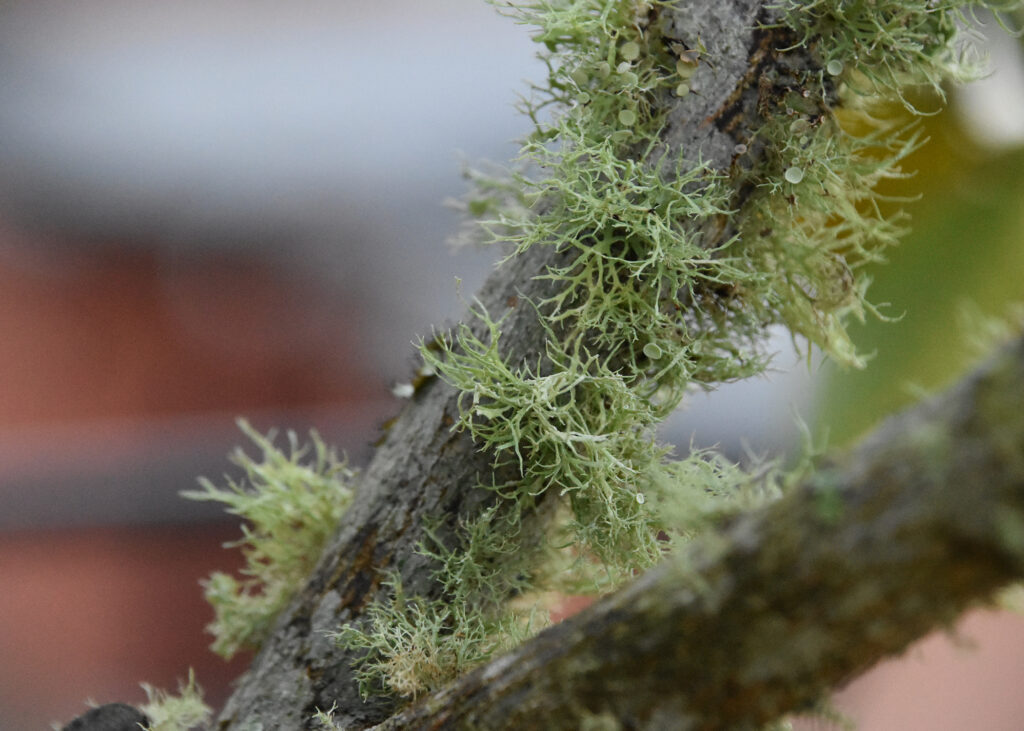
FOLIOSE -- Lichen are a combination of a fungi and algae that live in symbiotic relationship in the landscape. The sheet-like, wavy form growing on this branch are the foliose form. (Photo by MSU Extension/Gary Bachman) Alt text -- Greenish, flat and fuzzy patches cover a tree branch. ###

Lichen: A unique organism living in symbiosis
Lichens are neither fungi nor plants—they are both!
Lichens are a complex life form that is a cooperative partnership of two separate organisms, a fungus and an alga. The dominant partner is the fungus, which gives the lichen the majority of its characteristics, from its thallus shape to its fruiting bodies. The outer skin and internal structure of a lichen is made of strands of fungal hyphae. Interspersed among the strands inside the lichen are individual cells of algae.
Ranging in size from as small as a penny to strands that can be several feet in length, lichen grow in all types of places. Unlike trees and flowers that get their nutrients from the soil and rain, lichens get the food they need to survive directly from the air. Because lichen rely on the atmosphere for all of their nutrients, they can grow almost anywhere.
Every lichen lives on top of something else. The surface of that “something else” is called a substrate. Just about anything that holds still long enough for a lichen to attach to and grow is a suitable substrate. Trees, rocks, soil, houses, tombstones, cars, old farm equipment, and more can be substrates. The most common natural substrates are trees, rocks, and soil. Lichen contribute nitrogen and minerals to the ecosystems in which they occur.
The growth of lichens is actually a good sign because they will not survive in polluted areas. If you’ve got lichens, you’ve got good air quality. However, because lichens often take advantage of already stressed trees, their presence typically indicates the need for a bit of attention. See Tree Health Assessment Publication P3717 on the MSU Extension website which can help you evaluate and advise treatments for any weaknesses in your tree.
Because our tree leaves are falling, the higher light saturation allows the algae to carry out photosynthesis, making the lichen to grow more noticeably. Lichen presents in different forms and structures, from wavy folds to hairy-looking balls of fuzzy growth.
There’s no treatment recommended to control lichen, as it does no harm. The best way to reduce the appearance of lichen is to keep your landscape and garden trees and shrubs in great shape with proper fertilization and watering. A healthy and well-growing plant will have a canopy that discourages lichen growth. Light pruning of damaged branches encourages new branch growth, which in turn helps to establish a denser canopy.
For more information: Lichens of North America, by I. Brondo, S.D. Sharnoff, and S. Sharnoff is a big, beautiful picture book. It contains in-depth descriptions of lichen biology and a detailed key to the 3600 species found in North America.






